There’s gold to be found in the car culture of the Central Coast. It offers a wealth of stories and histories, told by endearing people, generous with their time—in addition to being a feast for the eyes, with a myriad of lovingly restored treasures on wheels. Our car culture spans demographics and geographic location, and car lovers embrace the old and the new.
In a different time, every car had a very distinctive look. A kid could name every car as it passed on the street—the elegant Lincoln Continental, the exciting Jaguar XKE, the comical Edsel.
As a teenager, I lived in Los Angeles’ San Fernando Valley. “The Valley” depicted in movies like Fast Times At Ridgemont High, and most importantly, American Graffiti, George Lucas’s pre-Star Wars ode to ’60s car culture, featuring a young Harrison Ford as a daring Hotrodder. Central to Lucas’ story is cruising night, and as I grew up, among the most distinctive cruisers were the Lowriders.
Now a transplanted Santa Cruzan, my memories of cruising nights were awakened every time I would pass a beautiful bright red convertible Chevy Impala lowrider, immaculate, with a pristine white interior, always parked at the same place, on my drive home. I knew that I had to know the story of this gem. But before I did, making some wonderful friends in the process, I was bound to visit a local mecca of the local car scene–an early-morning gathering of the faithful at my local mall.
REVELATIONS
There’s an apocryphal story from the days of the Soviet Union about a Russian émigré who visits an American department store, and faints dead away upon seeing aisle after aisle filled with an overwhelming array of treasures to be had.
I imagine I felt a similar sense of wonder when I entered the parking lot of Santa Cruz County’s Capitola Mall and stared, wide-eyed, at row after row of the most beautiful—no, dazzling—cars of all descriptions. It was a revelation, and it was where I learned that the people who own these marvelous machines are a source of oral histories—social and personal—that I invite everyone to discover.
These are the stories of some of the hundreds of car enthusiasts on the Central Coast.
A BLAST FROM THE PAST
Tom and Pam Standen are the proud owners of one of the most iconic cars of all time, a 1962 Corvette, similar to the one immortalized in the TV show Route 66.
Tom, 70, from Midpines, is a former earth-moving contractor turned designer, now retired. Tom and his wife Pam, 68, have shared a passion for cars since they were married in the 1970s.
Tom’s first car was a ’67 Ford Mustang coupe that he and Pam dated in. He helped her repair her ’67 Wildcat, and has been into cars ever since. Tom and Pam were married in 1974 when she owned a ‘72 Ford Pinto. He put a 289 V8 engine into it. He says it was one of the fastest cars he ever drove.
While buying a ‘56 Chevy Bel Air to restore, Tom found his prize Corvette in a barn buried underneath a pile of newspapers—with a little piece of a bumper showing. Tom recognized the bumper and he wanted the car. But the owner was saving it for his daughter as a graduation present.
One day he called and said, ‘My daughter doesn’t want it, she wants a BMW. Bring back that Bel Air and some money and I’ll trade.’
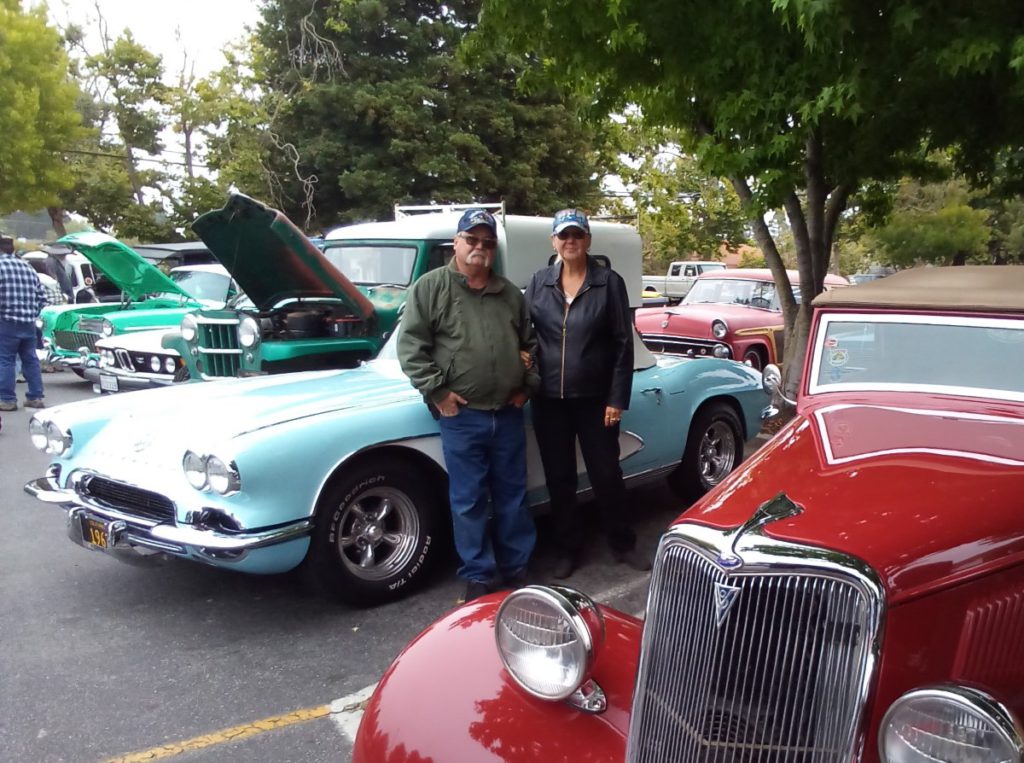
Tom bought it in 1993 and has restored it twice, with a 5-speed transmission, and rack and pinion steering.
“I took out all the old stuff to make it drivable,” he says. “Back in the day it drove like an old truck, but now it drives like a new car.”
Tom and Pam put it on the show circuit for a time, and finally brought it to the beach, because, as he says, “it’s a beach car.”
Oh, and the Standens also own a 1934 Ford Cabriolet coupe, like the one made famous in the “Legs” music video by the band ZZ Top, parked beside the Corvette.
“It’s got suicide doors,” Tom explains, showing how the doors are hinged to open backwards toward the rear. “Back in the day they would play chicken.” A prominent scene in the James Dean film Rebel Without a Cause depicts young hot rodders “playing chicken,” driving head-on toward each other, with predictable results.
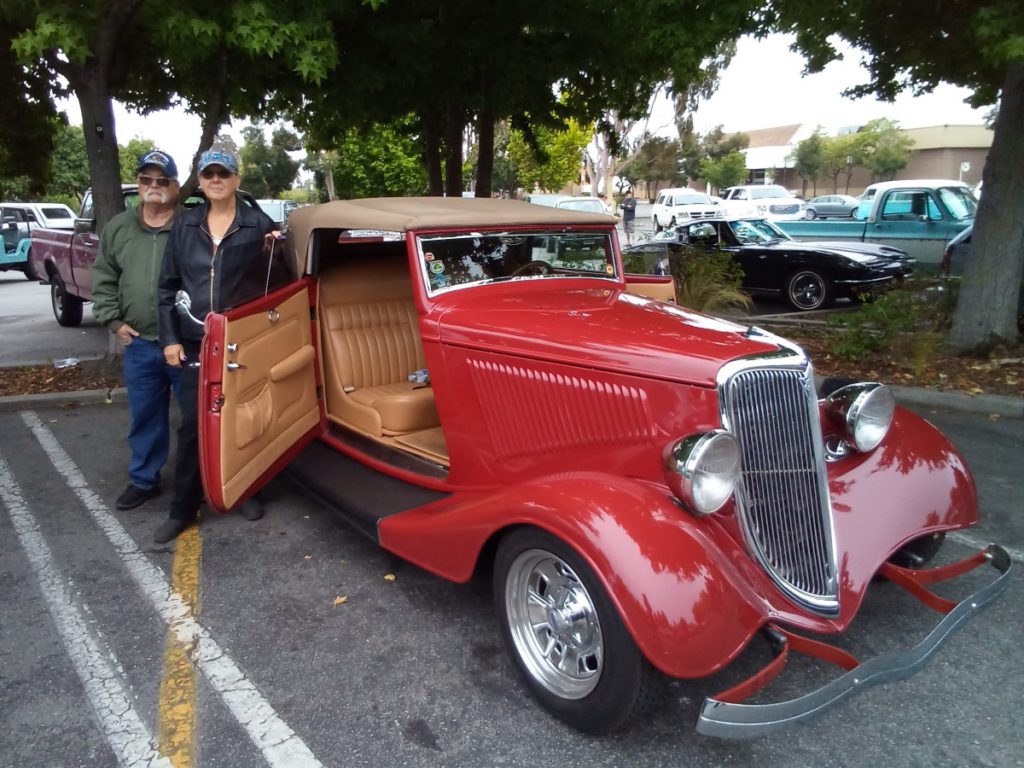
Tom looks back on the unique car culture of the Yosemite area where he grew up.
“In high school, we put V8s in 1950s Chevrolets. We would take them to the airport and race beside the runway, on a road we called the “quarter mile stretch.” Back then there were only two highway patrolmen, and my dad was one of them, back when you’d get strangled for smoking cigarettes. It’s completely different now.”
BACK TO THE FUTURE
At the opposite end of the spectrum, but equally crazy for cars are Kathleen and Dennis Griggs, arriving in a 2021 mid engine Corvette. The sleek, futuristic car would seem out of place, but for the sheer variety of designs on display.
“I always loved cars,” says Kathleen. “I’m a child from the 50s and early 60s. Cars were it!”
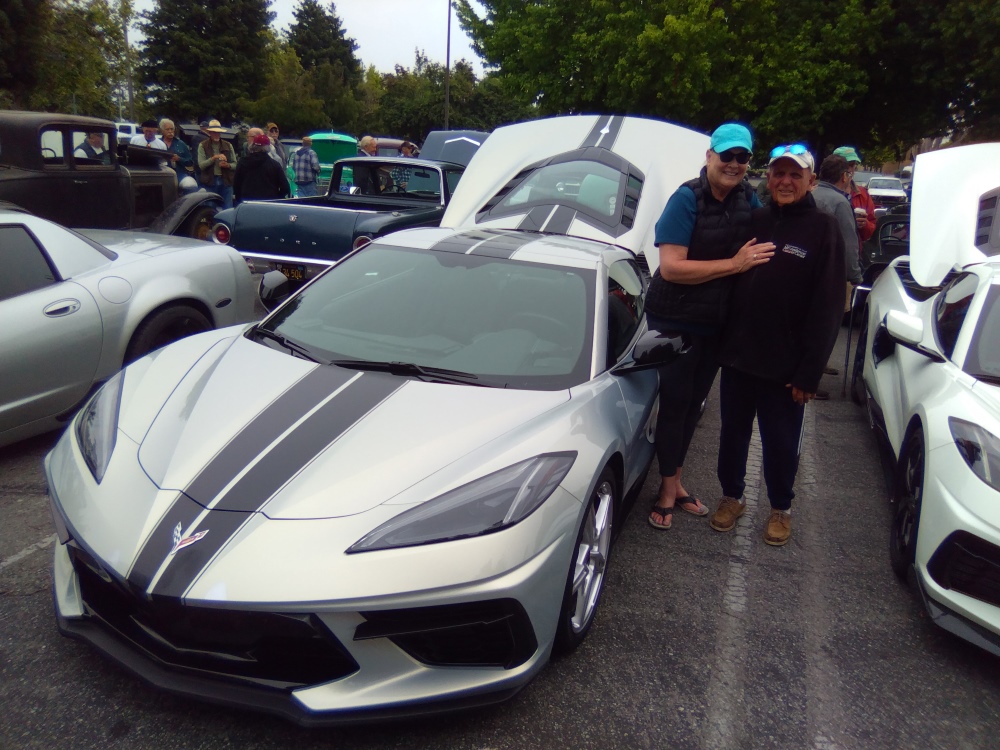
Kathleen, 68, has driven the Corvette as fast as 118mph. “I was up to 100 without realizing it,” she says.
“Top is 150 miles per hour or something, but I wouldn’t go that fast, that’s kinda crazy.”
She learned to drive in an old Dodge station wagon, and grew up all over the world as an Army brat, exposed to the cars of many countries.
“Best cars are here, American made,” she says.
Dennis had corvettes all his life, and in 2004 she got her first Corvette, fell in love with it, and upgraded in 2008 and 2016.
“If I could have a 63 Corvette that would be nice. Best corvette, you couldn’t do better unless you spend a couple hundred grand on a Ferrari.”
FROM JUNK TO JEWEL
Dennis Gagne (pronounced gahn-yay) was raised on the family apple orchard on Corralitos, and started driving at the age of nine. He learned to love cars and machinery from his dad, who worked on all sorts of cars and built his own tractor. His first car was the ubiquitous Chevy Impala, followed by a British MG Midget, a car that he says spent less time on the road than off in repairs.
He loved the 1951 Ford F-1 pickup truck with the iconic bullet-front ever since seeing one on “Sanford and Son,” a 70s TV show about a grouchy junk dealer.
He finally found one, in dire condition, and trailered it back to Scotts valley where it took six years to strip down to the frame and get it back up. The strength and thickness of the metal from that era required a professional body shop to bend, and the rotted wood and rails of the bed were replaced. The lime green paint it was found with was replaced with an original factory color called Sheridan Blue, deep and dark.
With all that, Dennis seems most excited to show the smallest of items. The original, tiny key, and the original log booklet that its first owner had meticulously filled with dates of tune-ups and fill-ups–70 years ago. [Dennis and his F-1 are seen in this issue’s cover photo]
Although the bullet-nosed Ford is currently Dennis’s only vintage car, he recently restored a 1989 Airstream.
A GOLDEN ERA
Garrett Gettleman served the community as a probation officer for many years, before retiring to head his own business in the solar energy sector. A common theme among members of these senior car collectors is a tendency to have had careers in public service, whether in government or private practice.
Garrett’s passion is for American muscle cars, vintage 1970 and earlier, ’70 being the last year of the high-powered car.
Gettleman owns a Pontiac Firebird, a GM stablemate of the Chevy Camaro, and a Plymouth Fury, the car featured as a murderous machine in the Stephen King movie Christine.
“I grew up with these cars. The golden era of GM spending big bucks on car design, making Firebird and Camaro different,” he says.
He explains how the necessity for smog regulations in 1971 “killed the party” after a decade in which General Motors spent heavily to make each of their car brands distinctive and competitive.
“1970 was the highwater mark for American performance cars. It was the last chance for automakers to do it all. 70 was a wild year.”
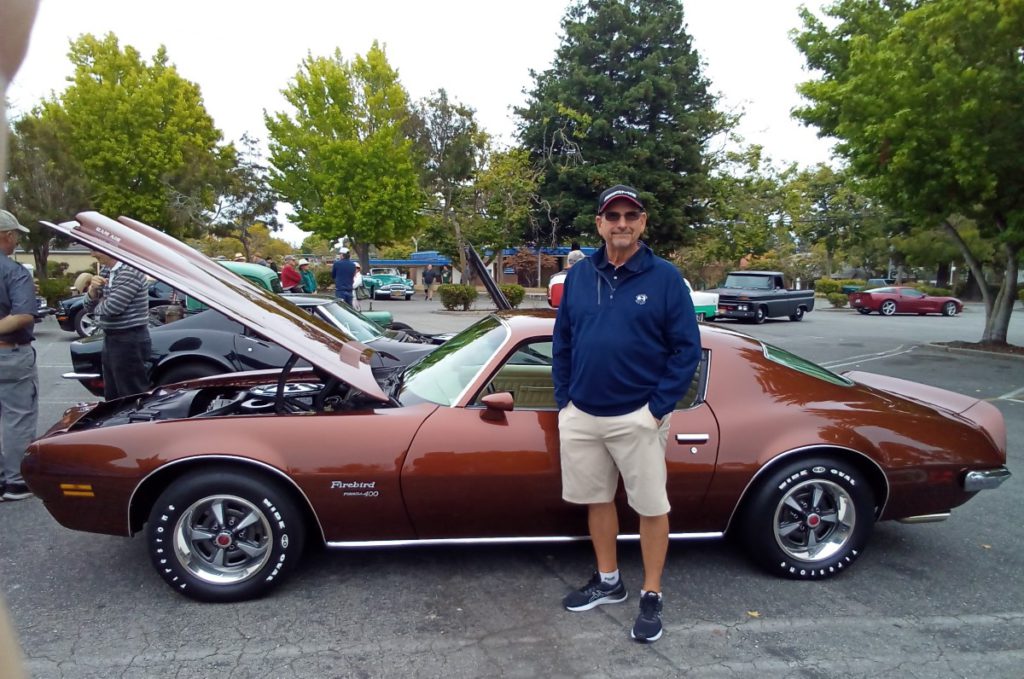
SUNSET OF THE WONDERFUL WOODIE?
Dave Welles, 75, has a long history of fond relationships with vintage cars. He remembers the nights cruising on summer nights with the windows rolled down in his hometown of Riverside.
His dad had a couple of Model A automobiles, one for street and one for racing on the flats at Bonneville. He had his first car, a ‘31 Chevy roadster, at 15 yrs old. Because he was a surfer, his next car was a 57 Ford ranch wagon two-door, and a string of VW buses came after that.
He always wanted a Woodie, but they were always more than he had saved up. He finally found one that needed everything in a garage in the hills of Ben Lomond. He tore it apart, spent four years on it, and as of today, it’s logged 50,000 miles.
Welles is a member of the Santa Cruz Woodie Club, well versed in the lore of the Woodie and its place in surfing history. He explains how the first of their kind were built out of necessity when the state of manufacturing technology didn’t allow for metal panels big enough to assemble a practical delivery truck. Steel chassis were sent from the car factory to shops that previously built wooden carriages where they were finished in the desired length.
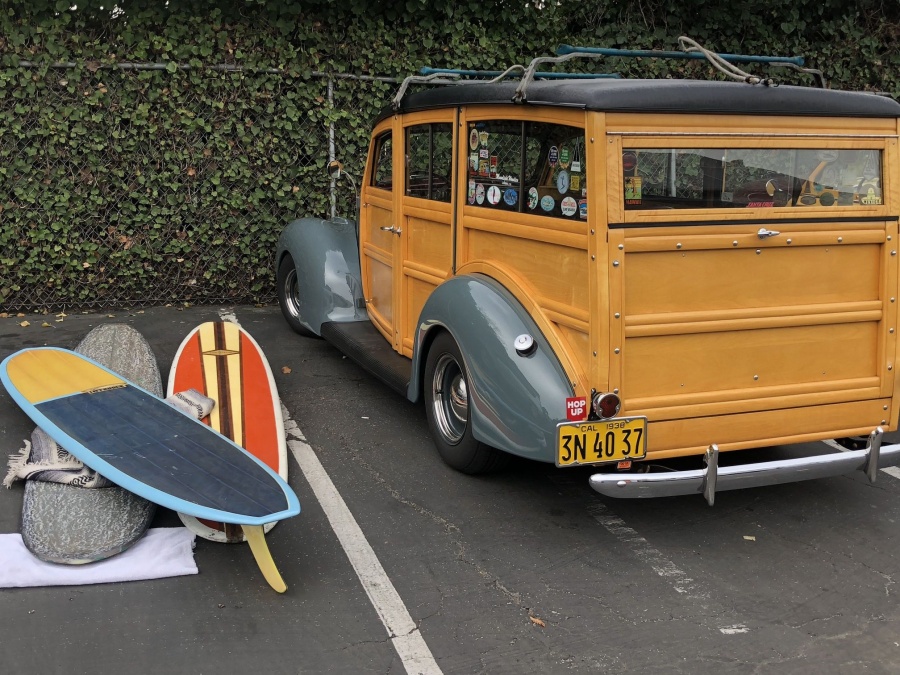
By the time the wood-paneled Woodie had become unfashionable and undesirable because of its need for maintenance, it was cheap enough to be the perfect surfboard-carrier.
“Surfers saved the woodie,” he says, but he fears their days may be numbered.
“There’s not a generation behind us that cares about them.”
LOWRIDER LOVE AND BUG BUGGIES
From where car culture meets the surf of the Santa Cruz coast, I headed to my final destination, to visit a hub of Latino car culture, a culture with deep roots from Watsonville to San Jose.
It was where I had first seen my dream lowrider, the Impala in red.
I discovered that she is owned by Edwin Landeros at Central Coast Audio and Tint, a family run business. Not only is Edwin an active participant in lowrider culture, but he’s also a leader of a club for VW Bug devotees, and enjoys restoring vehicles of all kinds.
Edwin hails from Mexico, where his mother ran a yogurt business. The family owned several “bugs” that they used for deliveries, VWs being very popular in Mexico for their affordability. It was here that Edwin learned how to work on cars.
When the big earthquake of 1985 destroyed his grandmother’s dentistry business in Mexico City, the family moved to America, where Edwin learned the business of installing car stereos. After years of hard work and determination, he built his successful business–now run by his son, Edwin Jr.
His eccentrically restored vintage bug can often be seen displaying its stenciled hand flashing a peace sign on the door. It’s a bug with a colorful history, as Edwin tells the story.
“I gave it to my dad, and he told me ‘You gave me a piece of shit! This thing’s all rusted!’”
Edwin was undeterred. “I took it home, rebuilt the engine, and I didn’t want to put money in it, so I sanded it and I clearcoat it, so all the dents and rust and patina still show. My daughter Jasmine, 13 years old, falls in love with it. She says, ‘You can’t sell it, you’re gonna give me this car.’ She was offered $20,000 and she won’t get rid of it.”
Too young to drive it for several years, Edwin says, “She’s tried!”
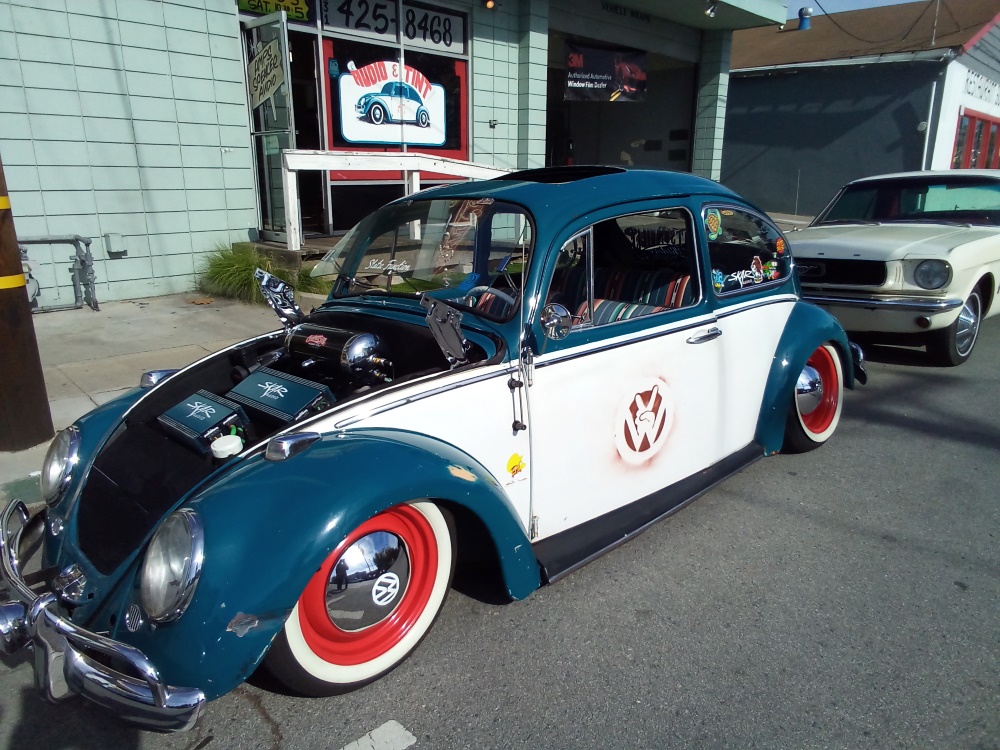
His generosity didn’t stop with his daughter, as he has given something special to his loved ones in the event of his passing–a vintage Ford lowrider named “Bambita” to his wife, a restored Mustang to his son Edwin Jr, and coming soon, a ‘64 Impala for son Brian.
“Everybody’s gonna have a car so if I ever pass away, they will have something that I built,” he said. “You can give money, or anything, but something like this, they know that I put my hands on it, and they’re never going to forget that.”
Edwin enjoys driving all of the family cars and chooses them to fit the moment.
“In Watsonville I’ll bring the Bombita, and in Santa Cruz I’ll bring the bug. In Scotts Valley I’ll take the Mustang. Everyone likes their different flavors, you know?”
At gatherings of Latino car clubs, whether Bugs or Lowriders, the presence of families is a noticeable difference compared to the vintage car gatherings of Anglo seniors, where a common refrain is that the kids spend more time indoors with games and devices.
Asked about it, Edwin explains why.
“We don’t give the kids a choice,” he says with a laugh. “We say, get in the car, we’re going! And they have a great time.”
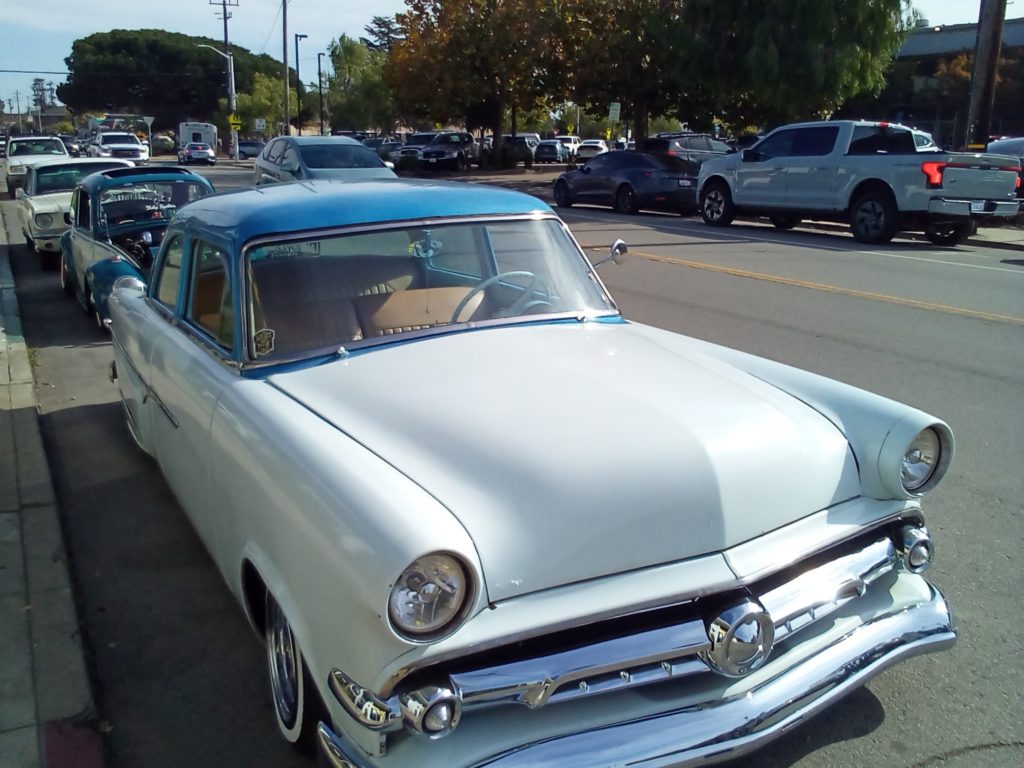
JOINING IN
The gatherings of car enthusiasts in the Central Coast are some of the most unsung (and free) opportunities for families to spend time together while appreciating some of the most beautiful historic artifacts to be found outside of a museum. The stories of passion and persistence to be told by vintage car owners could be a valuable lesson for young people whose future is already dominated by apps, A.I. and virtual reality.
The opportunity may not last long either, as the generation that grew up in the Golden Age of car culture passes on without an heir. Like the kids uninterested in maintaining the labor-intensive Woodies, their peers aren’t learning the art of classic car maintenance from their parents as the Boomers did.
For those who dream of joining the ranks of classic car owners, the price of admission can be low or very high, depending on one’s ability and patience. A restored 1955 Chevy will cost between $50,000 and $100,000. Most owners bought their beauties cheap as rusty relics and restored them slowly, investing time and money over the course of years, ultimately, putting more money into the restoration than they will ever get back by selling.
The cars of the 21st century still spark the excitement of the open road, and inspire creative customization and modification–but there’s something special, a kind of class and elegance and creativity in the design of the cars of yesteryear. We can rejoice that they still roam the streets, still inspire delight at a rare glimpse of them, and still gather for all to witness and admire while their owners remain.
As this story goes to press, there is good news for a revival of the ritual of cruising. California Assembly Bill 436 that prohibits anti-cruising ordinances and lowrider bans was enacted on Jan. 1, and cars and clubs were quick to take to the streets to celebrate.
So much more might have been shared in this issue if space permitted. The tale of the local dentist who chased the car of his dreams for years until chance brought them together; the wonderful lady of Capitola who collects Fiats and arrives in one so rusty it’s wrapped in caution tape; the lore of the post-WWII cars made in Germany by Messerschmitt that look like fighter planes on wheels.
These stories and more await those who spend a morning with the motorists of our Central Coast car culture.
LOCAL CAR EVENTS
Woodies on the Wharf, June 24, Santa Cruz Municipal Wharf https://www.santacruzwoodies.com/wow-2022-june-23rd-26th/
Ronnie’s Morning Get Together is a car show in San Jose on every second Saturday of the month at the Starbucks on Hillsdale Ave. FREE COFFEE & DONUTS
Cars & Coffee convenes every Saturday, 7:00–10:00 am, Rain or Shine
Capitola Mall Parking Lot (near Starbucks) at 41st and Clares St
17th Annual Hot Rods on the Green
July 6th, 2024 – 9 am to 4 pm
A fun event at Twin Lakes Church for the whole family.
San Jose Classic Chevy Club @ sanjosechevys.org
United Lowrider Council of San Jose @ ulcsj.com
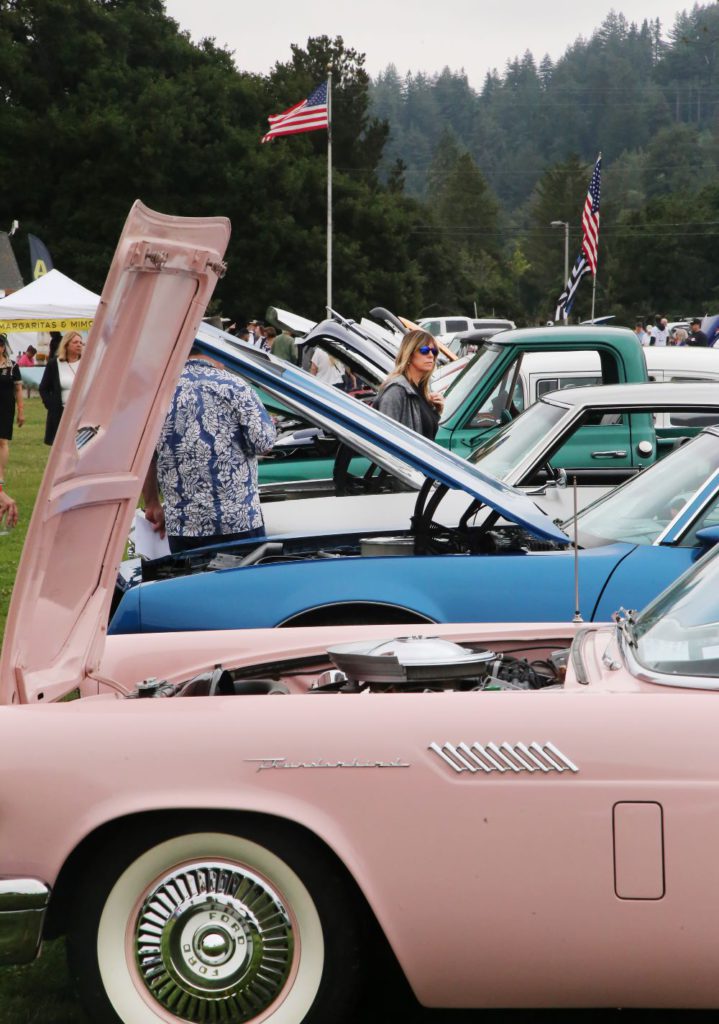
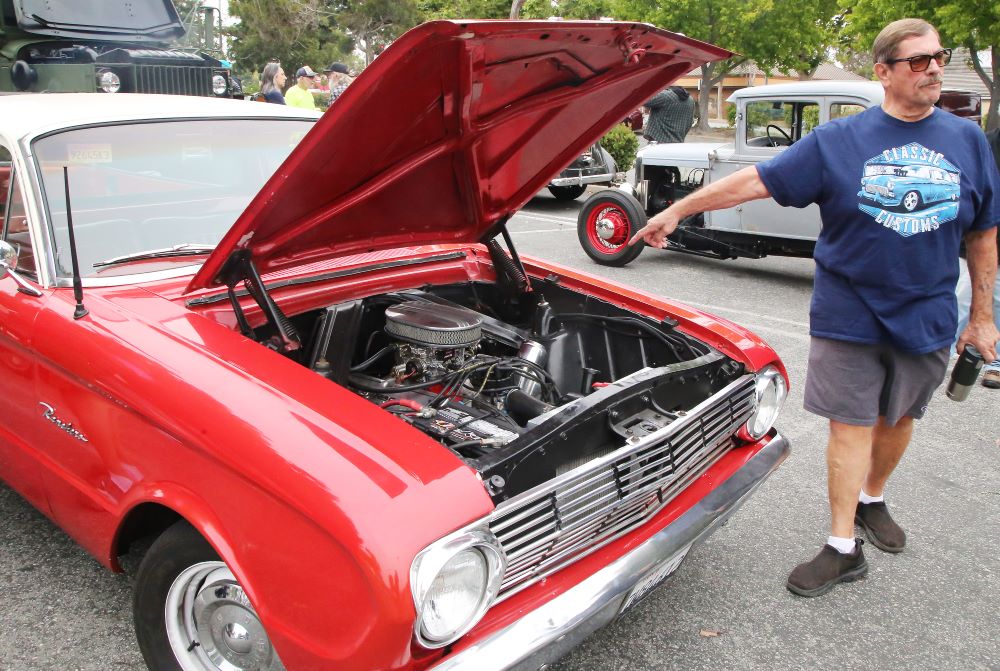
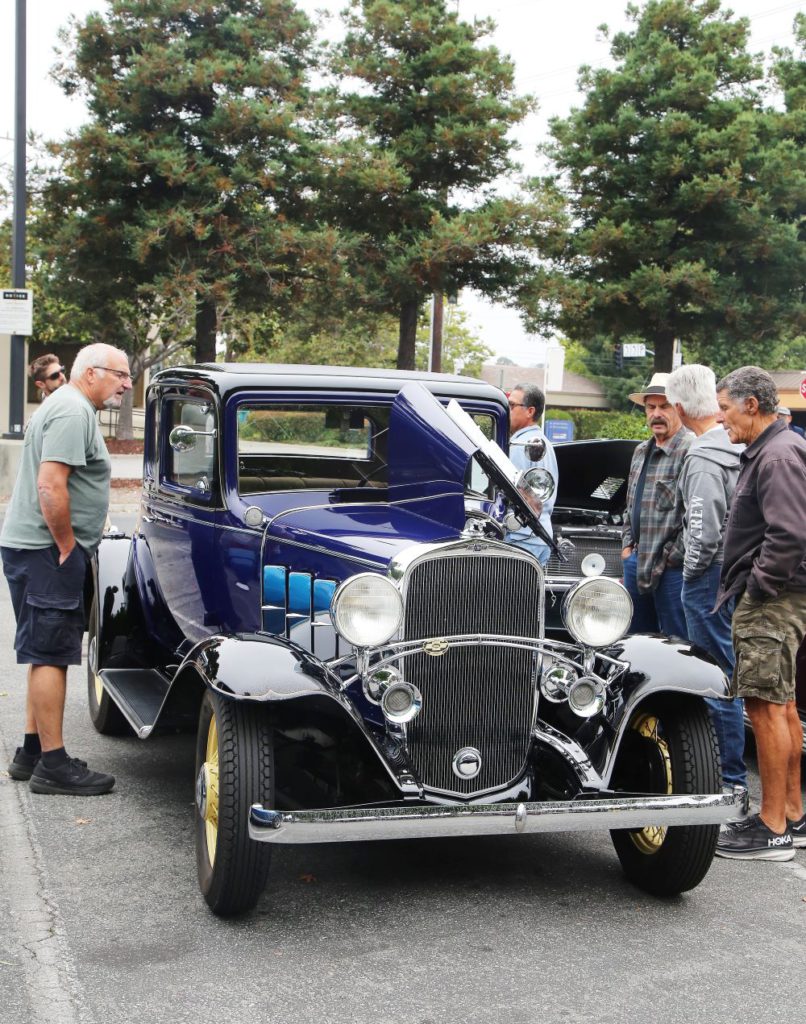
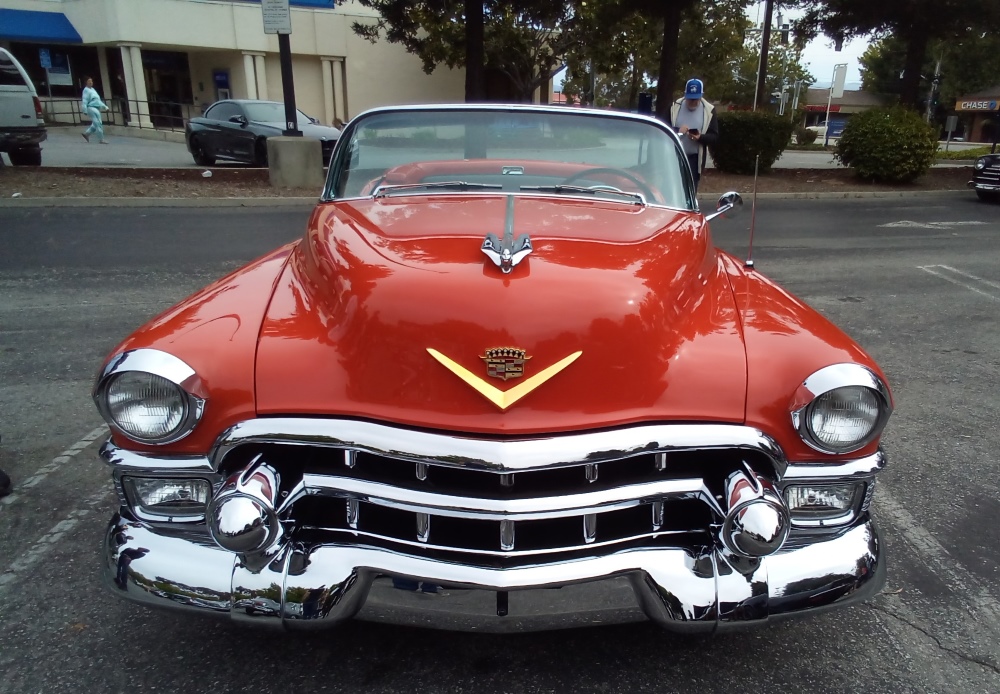
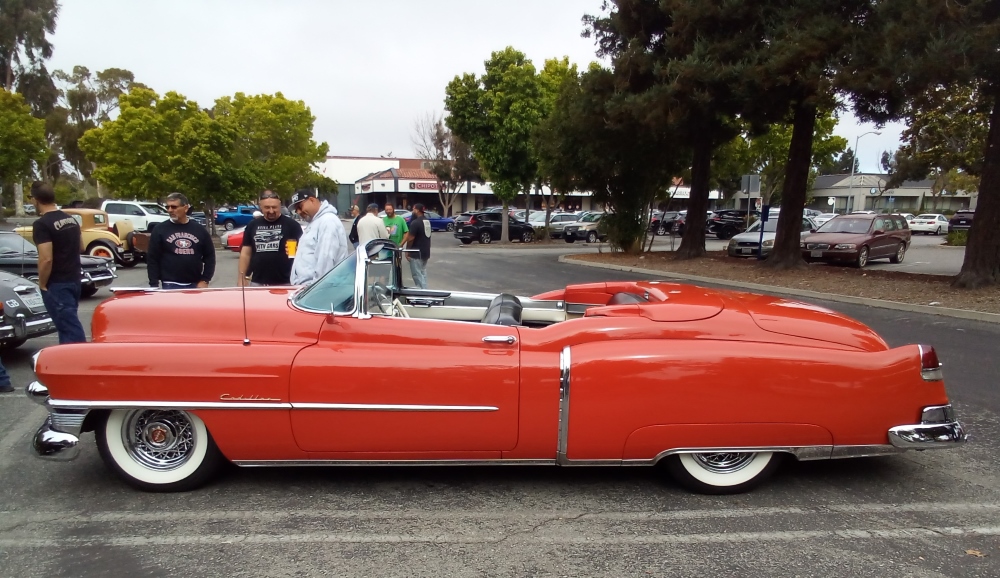
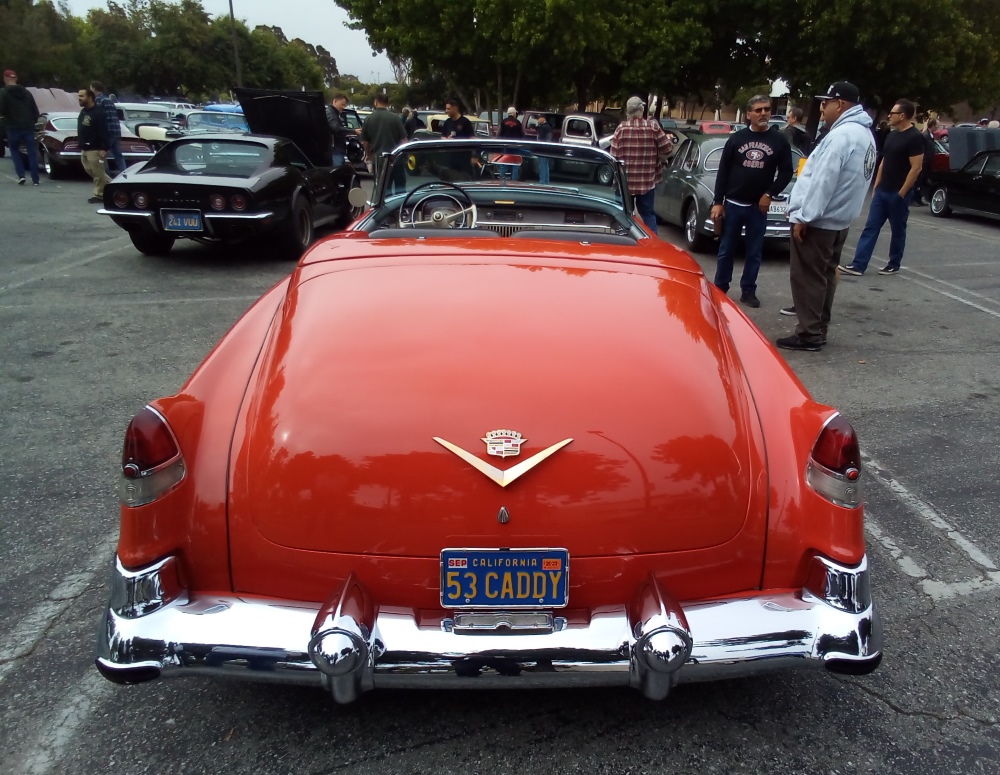


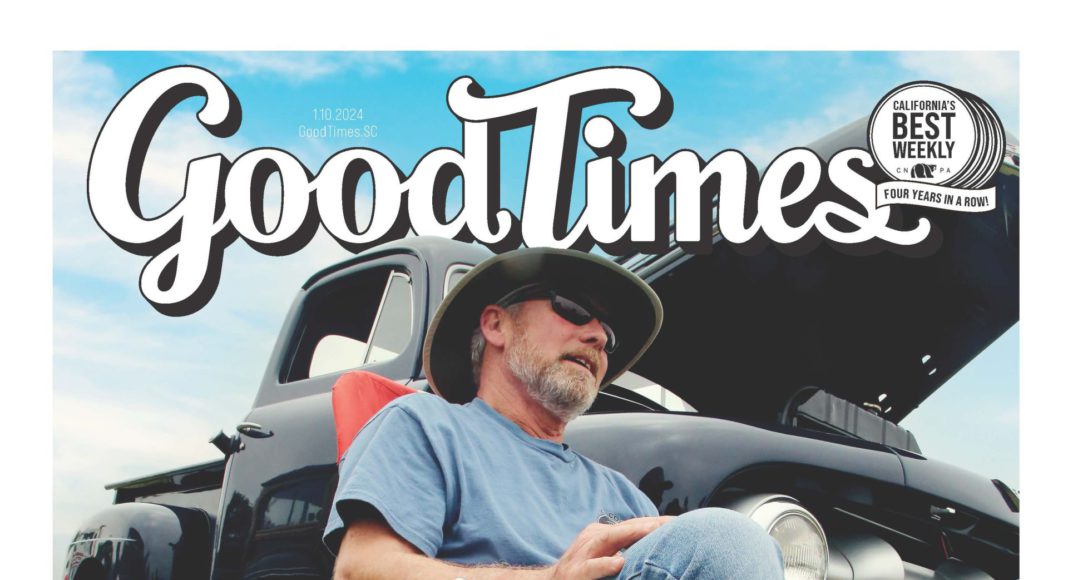











Loved the stories, my husband and I love the old cars.We have several.